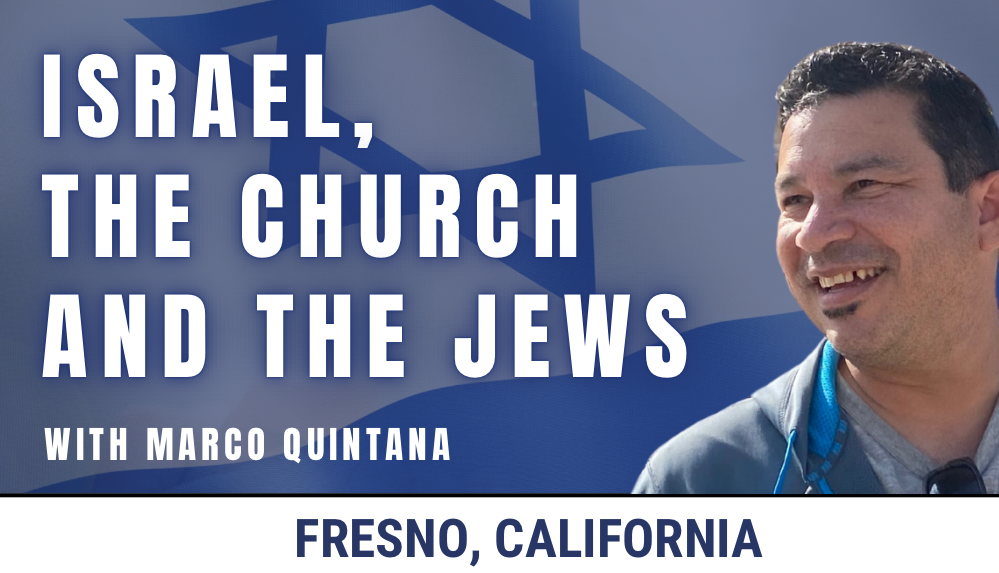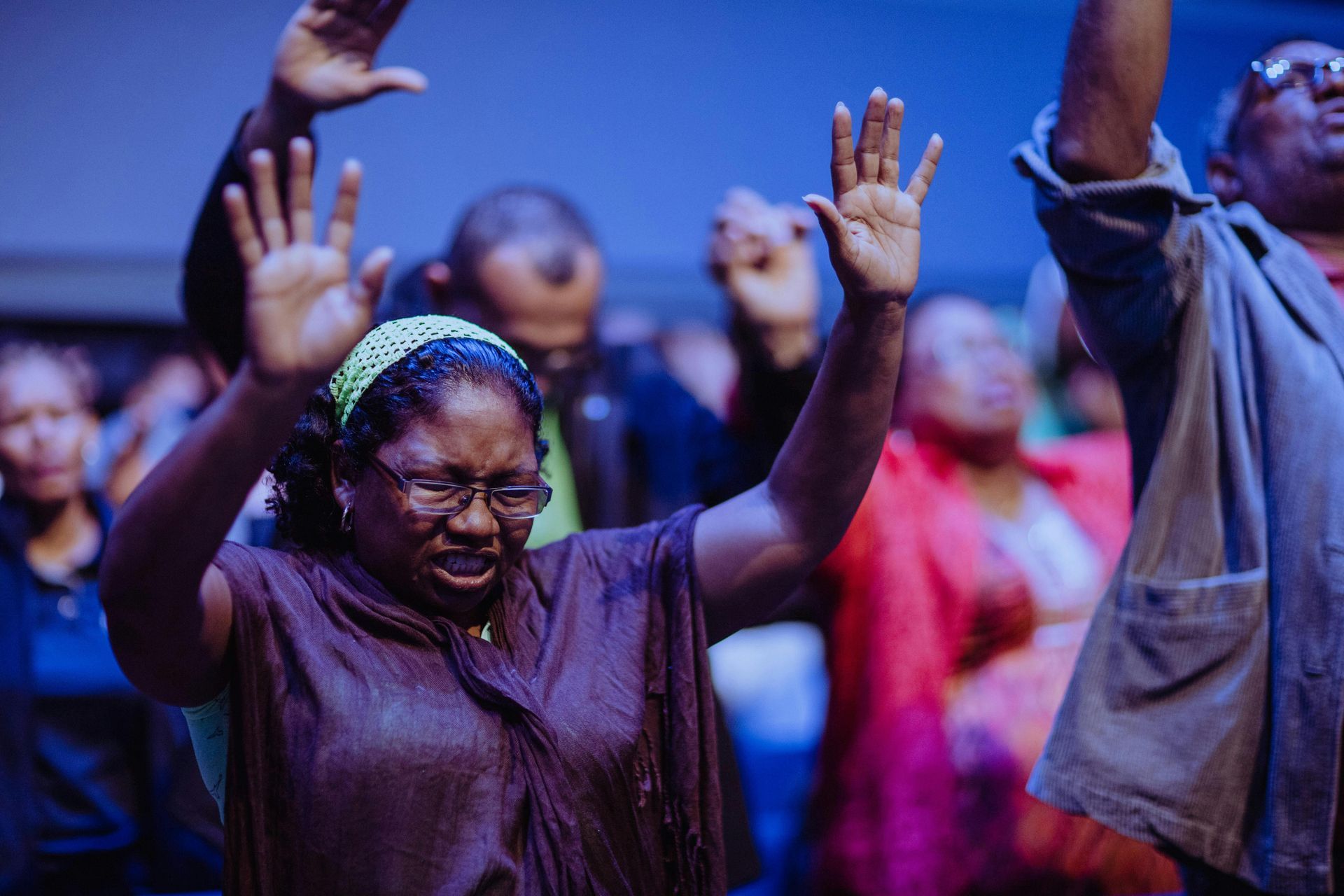Fall of the House of Saul
Scripture: 1 Samuel 28
God will not allow the old thing to fall until He judges that the new thing is ready to take its place.
La Chute de la Maison de Saül
Dieu cesse de parler à Saül
I Samuel 28:6: " Saül consulta l'Éternel; et l'Éternel ne lui répondit point, ni par des songes, ni par l'urim, ni par les prophètes." Nous ne savons pas avec certitude ce qu'étaient l'urim et le Thumim ; nous savons cependant qu'il s'agissait de deux sortes de pierres dans un écrin d'éphod, sur la poitrine du grand prêtre. Le terme urim a rapport avec le mot Hébreu utilisé pour « lumières » ; c'est ainsi qu'ils discernaient la direction de Dieu dans certaines circonstances au temps de l'Israël de l'Ancien Testament.
Dans I Samuel 28:6 nous voyons que Dieu a cessé d'éclairer le roi Saül; Il a cessé de l'entendre. À ce stade?ci, le leadership de Saül était entièrement rétrograde et perfide. Lorsque le leadership rétrograde, Dieu cesse de parler à ce dirigeant (ou ces dirigeants). Dieu ne parlait plus à Saül par la bouche des prophètes ? peut?être qu'Il lui enverrait de faux prophètes, mais Il ne lui parlerait plus par un vrai prophète, tel que Samuel. Dans ce genre de situation, Dieu retire les voix prophétiques.
Nous ne voyons pas les choses ainsi mais Dieu, oui : la mort de Samuel n'était pas une mauvaise chose pour Samuel. Ce dernier ne voulait pas être dérangé dans son sommeil, tel que nous pouvons lire dans 1 Samuel 28:15. Toutefois, la mort de Samuel était une mauvaise chose pour Saül. Ésaïe 57 :1 « Le juste périt, et nul n'y prend garde. » ? c'est un jugement venant de Dieu. Lorsque Dieu retire les voix prophétiques véridiques, c'est alors une des phases finales de Son jugement. Je crois personnellement que la mort prématurée de notre ami Larry Thomas était le jugement de Dieu sur les Assemblées de Dieu ; je ne crois pas que Dieu ait l'intention de donner un autre avertissement aux Assemblées de Dieu en Amérique. Je crois qu'Il les laissera simplement aller dans leurs voies, jusque dans l'apostasie et le déclin, ce qui est d'ailleurs déjà commencé.
Qu'arrive?t?il lorsque Dieu cesse de parler aux dirigeants rétrogrades ? Dans 1 Samuel 28 :11?16, nous voyons comment Saül a agi: "La femme dit: Qui veux?tu que je te fasse monter? Et il répondit : Fais?moi monter Samuel. Lorsque la femme vit Samuel, elle poussa un grand cri, et elle dit à Saül : Pourquoi m'as? tu trompée ? Tu es Saül! Le roi lui dit: ne crains rien; mais que vois?tu? La femme dit à Saül: Je vois un esprit (un être divin) qui monte de la terre. Il lui dit : Quelle figure a?t?il ? Et elle répondit : C'est un vieillard qui monte, et il est enveloppé d'un manteau. Saül comprit que c'était Samuel, et il s'inclina le visage contre terre et se prosterna. Samuel dit à Saül: Pourquoi m'as?tu troublé, en me faisant monter? Saül répondit : Je suis dans une grande détresse : les Philistins me font la guerre, et Dieu s'est retiré de moi ; il ne m'a répondu ni par les prophètes, ni par des songes. Et je t'ai appelé pour que tu me fasses connaître ce que je dois faire. Samuel dit : Pourquoi donc me consultes?tu, puisque l'Éternel s'est retiré de toi et qu'il est devenu ton ennemi ? "
La Stratégie Divine pour Commencer une Nouvelle Oeuvre
Dieu a laissé faire Saül pendant que David se fortifiait. Ceci est un principe qui revient lorsque Dieu fait affaire avec Son peuple. Il prend beaucoup de temps à préparer quelque chose de nouveau et met l'emphase sur la qualité plutôt que sur la quantité. Une fois la qualité installée, vient ensuite la quantité. Dieu ne permet pas à ce qui est ancien de tomber jusqu'à ce qu'Il juge que ce qui est nouveau soit prêt. Dieu a dit à Josué qu'Il ne lui donnerait pas tout le territoire d'un seul coup ; Il a permis aux Philistins, aux Cananéens et aux Jébusiens de demeurer dans le pays pour une saison, 'de peur que la terre soit trop pauvre '. Dieu permet même à ce qui est mauvais de demeurer en place jusqu'à ce que le bon qu'Il a fait soit prêt à prendre la place.
Lorsque Jésus est venu, qu'Il est mort et ressuscité d'entre les morts, il y a eu une brève période de temps d'environ quarante ans où deux alliances étaient techniquement en vigueur de façon simultanée : le Temple n'a pas été détruit pendant les quarante années qui ont suivi l'établissement de la Nouvelle Alliance. C'était là une opportunité que Dieu donnait aux Juifs de se repentir et d'accepter Jésus comme leur Messie avant que le Temple ne soit détruit tel que prédit par Daniel et Jésus.
Il en est de même pour Saül. Dieu ne le retire pas d'un seul coup ; jusqu'à ce que David soit prêt à prendre la place ? non seulement David lui?même mais ses hommes également, les rejetés d'Israël que Dieu avait préparés au désert. Ce n'est qu'à ce moment?là que Saül a tombé. Ainsi, nous ne verrons pas de grandes dénominations tomber du jour au lendemain. Elle tombent progressivement, et alors vient un jour où elles piquent du nez. Dieu les gardera en place jusqu'à ce que ce qui est nouveau soit prêt.
Préparer le Nouveau pour Remplacer l'Ancien
Lors de mes voyages à travers le monde, je vois effectivement que quelque chose de nouveau commence à prendre place. Parfois dans une petite église de contrée ; parfois dans de grandes assemblées telles que Times Square Church ou Brooklyn Tabernacle, toutes deux situées dans la ville de New York. Je le retrouve en divers lieux et il s'agit habituellement d'églises indépendantes pentecôtistes. Elles semblent être celles que Dieu prépare depuis longtemps, les amenant dans la droiture et les édifiant de manière qualitative. Lorsque la qualité de leadership est obtenue et que les gens sont motivés, Il commence alors à ajouter en quantité. Il n'y a pas de croissance explosive au départ.
Tous les hommes de valeur de David ne sont pas venus vers lui dans un même temps et deux événements ont dû se produire avant que tout Israël vienne vers lui. Premièrement, David et ses hommes ont dû se faire préparer. Ces rejetés d'Israël devaient devenir des dirigeants. Lorsqu'une assemblée commence à grandir en nombre, il est important de savoir combien de gens pourraient animer des cellules?maison et des études bibliques ; combien pourraient être en leadership ; combien pourraient planter d'autres églises. Nous disons toujours que nous nous attendons au Seigneur et il y a sûrement une vérité à cela. Mais il y a aussi l'envers de la médaille: le Seigneur attend après nous.
La qualité de l'enseignement que l'on trouve dans les assemblées et les gens que Dieu est en train de former est vraiment supérieure à ce que nous trouvons dans la plupart des églises. Ceci est particulièrement vrai des églises pentecôtistes et charismatiques. Voilà la question : Attendez?vous après Dieu ou Dieu attend?Il après vous ? Un individu peut entendre de bonnes études bibliques
semaine après semaine, mais quand devient?il prêt et volontaire à se mettre à la tâche de nourrir les autres ? Ce n'est qu'à ce point?là que nous pouvons légitimement voir une croissance explosive.
Souvenez?vous qu'au jour de la Pentecôte, l'église a commencé avec 120 membres; mais ils étaient prêts, c'est tout ce que cela prenait.
La Dernière Phase de la Maison de Saül
Partie 1 - Lorsque le Monde a Plus d'Intégrité que l'Église
Mais qu'est?il arrivé? La dernière phase de la maison de Saül. Lisez avec moi dans 1 Samuel 29 : 1 "Les Philistins rassemblèrent toutes leurs troupes à Aphek, et Israël campa près de la source de Jizreel. Les princes des Philistins s'avancèrent avec leurs centaines et leurs milliers, et David et ses gens marchaient à l'arrière?garde avec Akisch. Les princes des Philistins dirent : que font ici ces Hébreux ? Et Akisch répondit aux princes des Philistins : N'est?ce pas David, serviteur de Saül, roi d'Israël ? Il y a longtemps qu'il est avec moi, et je n'ai pas trouvé la moindre chose à lui reprocher depuis son arrivée jusqu'à ce jour. » "
Point 1: Les Philistins savaient que David n'avait rien fait de mal et voulaient au moins se comporter honorablement envers lui. Saül aussi savait que David n'avait rien fait de mal. Plusieurs, comme Saül, savaient cela mais s'acharnaient quand même sur lui. Ceci est la phase 2 des derniers jours de la maison de Saül: Lorsque le monde, les perdus, ont plus d'intégrité que l'Église, c'est très mauvais. Des Fédéraux ont rabaissé Jim Bakker. Pourquoi ? Parce que les pasteursƒmercenaires de l'Amérique n'avaient pas le courage ou l'intégrité de le faire. Alors le monde, sachant qu'il était corrompu, a démontré plus d'intégrité que l'Église.
L'un après l'autre, Copeland, Hagin, Fred Price et ainsi de suite ? s'en prennent aux pauvres et les exploitent. Pensez?y ? qui volent?ils le plus? Les pauvres, les sans?emploi, les familles monoparentales, les minorités ethniques. Ils promettent mer et monde aux gens. C'est une chose de soutirer de l'argent de ceux qui en ont; c'en est une autre de le faire envers ceux qui en manquent, ce qui équivaut à descendre à un niveau très bas. Celui qui oppresse le pauvre est une honte à son Maître. » Lorsque vous exploitez le pauvre, c'est un affront personnel à Dieu. Dans Son économie, les riches doivent aider les pauvres ; les intelligents aider les simples. Le monde se rend compte de cela, et a plus d'intégrité que l'Église. Il n'y a pas un seul réseau télévisé en Amérique qui ne retirerait pas un charlatan reconnu de leurs cédules de programmation.
Pourtant, il s'agit de chaînes télévisées mondaines ? qui véhiculent des émissions violentes et des perceptions dégénérées de la sexualité humaine ? oui elles font des choses viles mais pas autant que ces réseaux pseudo?Chrétiens. ABC a plus d'intégrité que TBN, bien que je n'aime pas ABC. Lorsque vous vous levez et parlez contre la corruption, le monde sait que vous dites la vérité. Et voilà la phase 1 : Lorsque le monde a plus d'intégrité que le soi?disant peuple de Dieu.
Partie 2 - Lorsque la Maison de Saül va trop loin - L'Occultisme
La deuxième raison pour laquelle Dieu attend est que la maison de Saül aille trop loin. A quel point vont? ils trop loin ? Lorsqu'ils trempent dans l'occultisme. La forme la plus grave de pratique occulte dans la Bible est le péché de nécromancie, i.e. communiquer avec les morts. Lorsqu'un croyant meurt et va
rejoindre le Seigneur, il ne reste plus qu'un point en commun entre lui et nous et ce, jusqu'à l'Enlèvement et la Résurrection : celui de s'adresser au même Jésus. Par le Saint?Esprit, Il transcende le temps, l'espace et l'éternité. Lui seul peut traverser cette barrière en simultané. Nous avons lu un cas unique où Dieu, dans le cas de Saül, a permis autrement.
Lorsque vous voyez des religions s'entretenir avec les morts, c'est une affaire sérieuse. Nous ne parlons pas ici des films épeurants qu'aiment les enfants, tel que Ghostbusters. Le Mormonisme, par exemple, s'implique beaucoup avec les morts. Nous retrouvons cela également dans le Catholicisme Romain ? lorsque vous entrez dans une de leurs églises ou dans une église Grecque Orthodoxe, remarquez à quel point il y fait sombre. Observez aussi toutes les statues érigées de gens décédés devant lesquelles ils allument des chandelles et brûlent de l'encens. De façon similaire, que voyez?vous dans le Shintoïsme, la pratique japonaise de l'adoration ancestrale? Les mêmes éléments. C'est l'esprit de mort. A la tombe de Lénine à Moscou, ils ont réembaumé son corps et l'ont modelé en une figure divine. C'est aussi l'esprit de mort. Même l'architecture et l'atmosphère de ces endroits reflètent ce qu'ils sont. Regardez une cathédrale et voyez combien elle ressemble à une maison hantée. Les jeunes enfants trouvent ces églises épeurantes lorsqu'ils y entrent. La noirceur physique des lieux reflète leurs ténèbres spirituelles.
Seul le Seigneur peut transcender le temps, l'espace et l'éternité. Lorsqu'un individu essaie de traverser cette barrière entre le temporel et l'éternité, il se met à la place de Christ. C'est l'esprit de l'Antichrist ? 'anti' veut littéralement dire 'à la place de'. C'est quelque chose de grossièrement démoniaque. Il ne s'agit pas seulement du fait qu'ils s'amusent avec les morts mais aussi qu'ils essaient de faire ce que Dieu seul peut. Toutes les fausses religions positionnent l'homme à la place de Dieu d'une manière quelconque.
A la télévision nationale, Benny Hinn a déclaré que les esprits de Kathryn Kuhlman et de Amy Semple? Mac?Pherson lui sont apparus dans sa chambre durant la nuit. Cet homme communie avec les morts. La Bible déclare que ceci est démoniaque ? cet homme est un nécromancier. Toutefois, rien de ceci ne semble être important ? ni ce qu'il a dit, ni ce qu'il a fait ? les gens acceptent ces choses comment venant de Dieu. L'église a prouvé sa volonté à accepter ce qui est démoniaque.
La Loyauté Erronée de l'Armée de Saül
Les armées de Saül ont continué de le suivre. Même ceux qui savaient que Saül était dans l'erreur, tel que ses propres fils, ont continué de lui être fidèles. De la même façon, les gens qui savent que ces églises sont dans l'erreur, persévèrent dans leur fidélité envers eux. Ceci est très sérieux. Lorsque vous atteignez ce point, le jugement ne peut être bien loin. Je suis absolument convaincu que ce qui est arrivé au club PTL, avec le scandale de Bakker, arrivera également à TBN et à Benny Hinn. Leur descente aura lieu.
Il viendra un temps de crise et quelque chose de nouveau en sortira. Nous lisons à ce sujet dans 2 Samuel 5 :1 "Toutes les tribus d'Israël vinrent auprès de David à Hébron... » Le jugement de Dieu est inévitable pour ces gens qui se sont ouvertement engagés dans l'occultisme. Ils étaient déjà impliqués depuis longtemps dans des pratiques occultes ; par exemple, Morris Cerullo, lorsqu'il utilisait des mouchoirs?miracles oints du Saint?Esprit pour payer sa dette ? cette pratique s'appelle du fétichisme.
Qu'est?ce qui retarde le jugement de Dieu ? Quelque chose qui émergera du chaos, vers lequel les gens pourront se tourner et y trouver la voie droite à suivre. Ce n'est que lorsque le nouveau sera prêt que Dieu permettra à ce qui est ancien de tomber, bien que Son jugement soit inévitable. Honnêtement, je crois que nous sommes rendus au point où Dieu a dit à Jérémie de ne plus prier pour certaines personnes. En fait, Samuel a demandé à Saül: "Que veux?tu que j'y fasse?" Personnellement, je ne prie plus pour que des gens, tel que Benny Hinn, se repentent ? je ne crois pas que cela soit maintenant possible car Dieu les a livrés à leur séduction. Je crois vraiment que le Seigneur nous averti de ne plus prier pour TBN. Le Seigneur les a livrés aux pratiques démoniaques qu'ils ont embrassées.
Continuons dans I Samuel 29:4: Mais les princes des Philistins s'indignèrent contre Akich et lui dirent: Renvoie cet homme, et qu'il retourne à l'endroit où tu l'as établi; qu'il ne descende pas avec nous au combat, afin qu'il ne devienne pas pour nous un adversaire pendant le combat. Et cet homme rentrerait? il en grâce auprès de son seigneur, sinon avec les têtes de nos hommes? N'est?ce pas ce David pour qui l'on entonnait en dansant : Saül a frappé ses mille ? et David ses dix mille. Akich appela David et lui dit : L'Éternel est vivant ! tu es un homme droit, et j'aime à te voir avec moi sortir et rentrer avec l'armée, car je n'ai rien trouvé de mauvais en toi depuis ta venue auprès de moi jusqu'à aujourd'hui, mais tu déplais aux ducs. A présent, retourne et va?t?en en paix pour ne rien faire qui déplaise aux ducs des Philistins.
David dit à Akich : Mais qu'ai?je fait, et qu'as?tu trouvé en ton serviteur depuis que je suis auprès de toi jusqu'à aujourd'hui, pour que je n'aille pas combattre les ennemis de mon seigneur le roi ? Akich répondit à David : Je le sais, car tu me plais autant qu'un ange de Dieu ; mais les princes des Philistins disent : Il ne montera pas avec nous au combat. A présent, lève?toi de bon matin, toi et les serviteurs de ton seigneur qui sont venus avec toi ; levez?vous de bon matin et partez dès que vous aurez assez de lumière. David et ses hommes se levèrent de bonne heure pour partir dès le matin et retourner dans le pays des Philistins ; et les Philistins montèrent à Jizréel. »
David connaissait son ennemi. Voici ce qui arrive dans les assemblées : nous avons une tendance à devenir Amish. Le peuple Amish est une secte Mennonite dont les ancêtres en Hollande étaient des gens vraiment sauvés. Toutefois, la plupart d'entre eux aujourd'hui sont sectaires et non?sauvés. Ils ont oublié comment vivre parmi le monde sans être du monde. Lorsqu'un groupe devient fermé sur lui?même au point de perdre sa capacité de comprendre et d'entrer en relation avec les non?croyants, il devient inefficace au niveau d'évangélisation.
Je ne fais pas la promotion des Chrétiens qui écoutent de la musique heavy métal ? personnellement, je la déteste. Cependant, je prône la compréhension de ce qu'elle représente. Autrement, comment témoigner à ceux qui l'écoutent? Il est insensé de passer des heures de notre temps devant le téléviseur, écoutant une stupidité après l'autre. Mais il est bon de savoir ce que le monde aime écouter ainsi que de savoir ce qu'ils pensent. David a appris à connaître son futur adversaire. La façon dont il a vaincu les Philistins fut d'être l'un d'eux, non de manière ethnique mais en faisant partie de leur armée. Les Philistins, pour leur part, auraient possiblement vaincu les Amalécites s'ils avaient gardé David avec eux. Dieu les auraient peut?être bénis s'ils avaient béni David au lieu de le tenir à l'écart. Cela fut leur perte.
David connaissait son adversaire. Les gens qui sont sauvés hors du monde ont généralement un avantage lorsqu'ils témoignent parce qu'ils savent comment pensent les non?sauvés. Personnellement, je n'ai pas un grand fardeau pour les drogués. On pourrait croire que je le devrais puisque j'en étais un. J'étais un adepte des drogues dures pendant mon adolescence. Je consommais de l'héroïne à l'âge de 16 ans mais une fois au collège, mon dieu était la cocaïne. Il est possible que le fait d'être parmi eux me rappelle trop de souvenirs que je préférerais oublier. Je comprends cependant leur culture ; je comprends la manière de penser d'un junkie, ce qui le fait fonctionner. Des petits cercles saints sont nuisibles. 'Soyez dans le monde, mais pas du monde'. Trop de Chrétiens sont coupés du monde extérieur et ignorent ce qu'est le monde. L'exception habituelle sont les églises qui sont mondaines. Par conséquent, en grande partie, vous avez deux choix pourris : celui d'être coupé du monde extérieur ou d'être mondain. Aucun n'est biblique. Il est plus biblique d'être Amish que mondain mais l'équilibre est préférable: 'dans le monde mais non mondain.'
Prudence Concernant la Confiance À l'Homme Déchu
Notez que les Philistins acceptent David jusqu'à un certain point. Le monde finira toujours, toujours, toujours par rejeter les Chrétiens ; les Chrétiens ont déjà rejeté le monde. Ne faites jamais confiance à un non?sauvé. Laissez?moi répéter : ne faites jamais confiance à un non?sauvé. Même si vous en avez marié un, ne lui faites pas pleinement confiance. « Le monde entier est sous la puissance du malin'; Satan est le dieu de ce monde'. Si une personne n'est pas sous le sang de Jésus, directement ou indirectement, elle est à l'oeuvre pour le dieu de ce monde, le diable. Encore une fois : ne faites jamais confiance à un non?sauvé ; cela tournera contre vous à un moment donné.
La Maison de Saül versus la Maison de David
David quitte l'armée des Philistins. Continuons notre lecture dans 1 Samuel 30 : « Lorsque David arriva le troisième jour à Tsiklag avec ses gens, » ? le troisième jour fait habituellement allusion à la Résurrection mais je ne m'attarderai pas à cela maintenant ? les Amalécites avaient fait une invasion dans le midi et à Tsiklag. Ils avaient détruit et brûlé Tsiklag, après avoir fait prisonniers les femmes et tous ceux qui s'y trouvaient, petits et grands. Ils n'avaient tué personne, mais ils avaient tout emmené et s'étaient remis en route. David et ses gens arrivèrent à la ville, et voici, elle était brûlée; et leurs femmes, leurs fils et leurs filles, étaient emmenés captifs. Alors David et le peuple qui était avec lui élevèrent la voix et pleurèrent jusqu'à ce qu'ils n'eussent plus la force de pleurer. Les deux femmes de David avaient été emmenées, Achinoam de Jizreel, et Abigaïl de Carmel, femme de Nabal. David fut dans une grande angoisse, car le peuple parlait de le lapider, parce que tous avaient de l'amertume dans l'âme, chacun à cause de ses fils et de ses filles. Mais David reprit courage en s'appuyant sur l'Éternel, son Dieu. Il dit au sacrificateur Abiathar, fils d'Achimélec : Apporte?moi donc l'éphod ! Abiathar apporta l'éphod à David."
Comprenons ce qui se passe: Dieu ne parlait plus à Saül par l'Urim et le Thummim; Il parlait cependant à David par l'Urim et le Thummim, lui donnant la lumière. Les gens peuvent posséder une plus grande armée, une plus grande église, un plus grand nom mais si Dieu ne leur parle plus, à quoi cela leur sert?il ?
Part 3 - La Maison de Saül est vaincue
La première caractéristique de l'armée de Saül est qu'elle a moins d'intégrité que le monde. La deuxième est qu'elle trempe dans l'occultisme. La troisième est qu'elle ne peut plus obtenir la victoire. Les églises de ce genre ne peuvent vaincre l'Islam qui croît en Amérique, ni le Mormonisme ou le Nouvel Age, ni aucun autre ennemi de Dieu. Ils n'ont aucun pouvoir de faire cesser les avortements ni d'empêcher l'enseignement de l'homosexualité dans les écoles publiques.
Revisons encore les caractéristiques de l'armée de Saül: Premièrement, elle a moins d'intégrité que le monde. Deuxièmement, Dieu cesse de lui parler et elle se tourne vers l'occultisme. Troisièmement, elle ne peut vaincre. L'occultisme est très présent dans l'église : la plupart des visions et des images qu'ils reçoivent sont de la clairvoyance , au mieux leurs prophéties sont psychologiques ou au pire elles sont occultes et nous voyons maintenant la nécromancie. Regardons ce qui arrive à la maison de David pendant que celle de Saül s'enlise:
Un Regard Attentif À La Maison De David
David cherche Dieu. Souvenez?vous qu'il est dans de fâcheuses circonstances: Il possède une petite armée, il perd des hommes ainsi que des bien?aimés. Il est face à un ennemi externe ainsi qu'un ennemi interne. Ces jours?ci, les églises fidèles se trouvent dans la même situation. Nous sommes confrontés par une communauté homosexuelle radicale ? rappelez?vous que les homosexuels ne peuvent procréer ; c'est pourquoi ils veulent vos enfants et demandent que leur style de vie soit enseigné dans les écoles ainsi que le droit de diriger les Scouts et d'amener vos jeunes enfants camper. Comme si ce n'était pas suffisant ? de l'autre côté nous avons Saül. Nous avons les églises occultes. Nous sommes petits ; nous combattons des deux côtés et nous payons un prix personnel élevé. Néanmoins, aux jours de David, Dieu parlait dans ces circonstances. Saül avait la quantité mais ne pouvait obtenir la victoire. Il avait le nom mais Dieu ne lui parlait plus. Je préfère me réunir dans un garde?robe avec cinq Chrétiens qui étudient la Parole de Dieu, qui entendent Sa voix dans Sa Parole et par Son Esprit que de me réunir dans un aréna avec cinq mille personnes du camp de Saül. Qu'importe leur nombre, ils ne peuvent obtenir la victoire et Dieu ne leur parle pas. A quoi bon, après tout, si Dieu n'y est pas ?
Chapître 30, verset 8: " Et David consulta l'Éternel, en disant: Poursuivrai?je cette troupe? L'atteindrai? je ? L'Éternel lui répondit : Poursuis, car tu atteindras, et tu délivreras. Et David se mit en marche, lui et les six cents hommes qui étaient avec lui. Ils arrivèrent au torrent de Besor, où s'arrêtèrent ceux qui restaient en arrière. David continua la poursuite avec quatre cents hommes ; deux cents hommes s'arrêtèrent, trop fatigués pour passer le torrent de Besor. Ils trouvèrent dans les champs un homme égyptien, qu'ils conduisirent auprès de David. Ils lui firent manger du pain et boire de l'eau, et ils lui donnèrent un morceau d'une masse de figues sèches et deux masses de raisins secs. Après qu'il eut
mangé, les forces lui revinrent, car il n'avait point pris de nourriture et point bu d'eau depuis trois jours et trois nuits. David lui dit : A qui es?tu, et d'où es?tu? Il répondit : Je suis un garçon égyptien, au service d'un homme amalécite, et voilà trois jours que mon maître m'a abandonné parce que j'étais malade. Nous avons fait une invasion dans le midi des Kéréthiens, sur le territoire de Juda et au midi de Caleb, et nous avons brûlé Tsiklag. David lui dit : Veux?tu me faire descendre vers cette troupe ? Et il répondit : Jure?moi par le nom de Dieu que tu ne me tueras pas et que tu ne me livreras pas à mon maître, et je te ferai
descendre vers cette troupe. Il lui servit ainsi de guide. Et voici, les Amalécites étaient répandus sur toute la contrée, mangeant, buvant et dansant, à cause du grand butin qu'ils avaient enlevé du pays des Philistins et du pays de Juda. David les battit depuis l'aube du jour jusqu'au soir du lendemain, et aucun d'eux n'échappa, excepté quatre cents jeunes hommes qui montèrent sur des chameaux et s'enfuirent. » Nous avons ici une comparaison : Les quatre cents qui s'enfuirent et les quatre cents qui étaient avec David ; il y avait un équilibre.
"David sauva tout ce que les Amalécites avaient pris, et il délivra aussi ses deux femmes. Il ne leur manqua personne, ni petit ni grand, ni fils ni fille, ni aucune chose du butin, ni rien de ce qu'on leur avait enlevé : David ramena tout. Et David prit tout le menu et le gros bétail ; et ceux qui conduisaient ce troupeau et marchaient à sa tête disaient : C'est ici le butin de David. David arriva auprès des deux cents hommes qui avaient été trop fatigués pour le suivre, et qu'on avait laissés au torrent de Besor. Ils s'avancèrent à la rencontre de David et du peuple qui était avec lui. David s'approcha d'eux, et leur demanda comment ils se trouvaient. »
Nous avons vu les phases de Saül: Il n'entend plus Dieu, a moins d'intégrité que le monde, il pratique l'occultisme et est incapable d'obtenir la victoire. Regardons maintenant David : Il a appris à connaître son ennemi ? il n'était pas au courant de son existence, il le connaissait. Il n'y a pas de lumière au bout du tunnel mais plutôt davantage de ténèbres. Ensuite vient la lumière. Les choses empirent avant d'aller mieux. La phase ou l'épreuve finale de la nouvelle armée, la nouvelle église, le nouveau mouvement venant de Dieu, dans le caractère de David, est lorsque cela affecte les familles.
Les familles sont les groupes de cellule d'une assemblée. Aucune assemblée ne sera plus en santé que les familles qui la compose. Qu'importe à quel point l'enseignement biblique est bon, ou l'adoration, ou la communion fraternelle. Ce qui arrive dans l'église ne surpasse pas la somme totale de ce qui se passe dans les temps de dévotion familiale ou lorsque les conjoints prient ensemble. Pour bien saisir la spiritualité d'une personne, vous devez remarquer quel genre d'époux et de père ou d'épouse et de mère il ou elle est.
La Mise à l'Épreuve du Vrai Leadership
Il existe une dure épreuve qui vous met en danger de perdre ce qui vous est précieux, même ceux que vous aimez. C'est alors l'ennemi qui vous attaque ? ce n'est pas Dieu. Toutefois, Dieu le permet pendant une saison, jusqu'à un certain point, pour Ses propres raisons. David est un type de Christ en tant que Roi et Berger. Par exempe, lorsque les fils de Saül sont demeurés fidèles à leur père au lieu de David, c'était un type de ce que Jésus a dit dans Matthieu 10 :37 « Celui qui aime son père ou sa mère plus que moi n'est pas digne de moi, » Notez cependant que David a souffert les mêmes choses que son peuple. Il en est ainsi avec Jésus, notre Leader. Nous ne vivons rien qu'Il n'a pas Lui?même vécu. C'est la caractéristique d'un dirigeant selon Dieu : il souffre la même perte que son peuple. Prenez garde de celui qui se tient debout en chaire pour vous dire de sa bouche comment être spirituel alors que sa vie ne l'enseigne pas. Parler compte peu. Le leadership biblique se vit toujours par l'exemple. Ceci peut affecter les gens de différentes façons. Pour ma part, il est certain que le fait d'être un ministre itinérant
m'apporte des périodes de séparation d'avec ma femme et que c'est là une épreuve. Il n'est pas facile d'être éloigné d'elle pendant des semaines. Je n'ai jamais eu d'aventure, mais vous savez quoi ? Il y eut un temps où Jim Bakker n'avait jamais eu d'aventure. Il suffit d'une fois. Comment se tient?on debout?
David a perdu des choses et des personnes qu'il aimait ? pour une courte période ? et les a récupérées par la suite. L'épreuve vient contre les gens sous différentes formes. Mais les futurs dirigeants de Dieu auront été tellement éprouvés en toutes choses qu'ils sauront qu'ils pourront se tenir debout. Dieu sait déjà qui peut et ne peut pas se tenir debout ? lorsqu'Il permet que nous soyons éprouvé, ce n'est pas pour Son bénéfice, afin de connaître notre force. Il veut que nous nous connaissions et désire que le Corps le sache. Souvenez?vous que Sa Parole dit : 'Que ceux qui dirigent soient premièrement éprouvés'. Nous nous faisons dire de regarder les familles des dirigeants, leurs vies ; toutefois les leaders d'aujourd'hui se divorcent et se remarient. C'est un non?sens.
Alors oui, l'épreuve et la tribulation vient de l'ennemi mais parce que Dieu le permet, vous savez que vous pourrez tenir le coup. Vous aurez une confiance que vous n'auriez pas connue autrement. Évidement, vous devez faire confiance à Dieu et non à vous?même. « Que celui qui croit se tenir debout prenne garde de tomber. » (1 Corinthiens 10:12) mais lorsque vous avez été éprouvé, vous savez que vous avez gardé vos yeux sur le Seigneur et que vous êtes capable de les garder là. Celui qui est capable de vous soutenir le fera ; vous le savez parce que vous avez été éprouvé et le Corps de Christ le sait également. C'est le genre de dirigeant que le peuple de Dieu veut suivre, surtout lorsque les temps sont difficiles. Les gens veulent s'identifier à ceux qui sont plus forts qu'eux. Pour chacun de nous, en vérité, ce serait Jésus. Alors lorsque vous voyez un leader, ne regardez pas à lui. Regardez plutôt à l'oeuvre de Dieu dans sa vie. C'est la source de sa force et, dans une situation de crise, quelqu'un qui a été durement éprouvé et qui a passé l'épreuve est le genre de personne à qui l'on fera confiance. La dernière chose dont nous avons besoin lors d'une urgence médicale, c'est un médecin indécis. Nous voulons quelqu'un d'expérimenté, qui sait ce qui se passe et comment y faire face. Il en est de même pour un dirigeant dans une assemblée. David a souffert la même perte que son peuple.
La Trahison à Laquelle les Dirigeants font face
Maintenant, regardez ceci : ce peuple, son peuple, parle de le lapider. Vous désirez être un dirigeant? Quand savez?vous que vous êtes un leader? Lorsque 2 Timothée 4:16,17 vous concerne. Lorsque vous êtes trahi et frappé par derrière par les gens pour lesquels vous avez donné votre vie et que vous vous abstenez de devenir amer. Lorque les temps sont durs, les gens blâment les dirigeants. Qu'a dit le peuple à Moïse dans le désert ? ? 'Pourquoi nous as?tu conduit ici pour mourir?' Qu'on dit les disciples à Jésus dans la chaloupe? ''Pourquoi nous as?tu amenés ici pour nous noyer?' Et voici ce que les gens disent à David ? 'Nous t'avons suivi et regarde ce qui nous arrive: nous avons perdu nos familles'. Ils s'en prennent aux dirigeants. La famille est le terrain où les gens sont les plus vulnérables. Lorsque le mariage et les enfants sont en jeu, c'est là que la foi est le plus durement éprouvée et c'est très, très difficile.
Lisons le verset 4: "Alors David et le peuple qui était avec lui élevèrent la voix et pleurèrent jusqu'à ce qu'ils n'eussent plus la force de pleurer." Ils ont atteint le point de l'épuisement émotionnel. Job a vécu la même chose. J'ai connu un homme Juif nommé Gershom. Les Nazis ont tué ses parents, son frère, ses deux soeurs ainsi que leurs familles, sa femme et ses cinq enfants, jusqu'au bébé. Il s'en est fallu de peu pour qu'il ne puisse survivre lui?même au camp de concentration. Pendant les quarantes années suivantes de sa vie, cet homme a vécu l'enfer. Il était un zombie. Il avait eu tellement de douleur qu'il n'avait plus la capacité émotionnelle de ressentir de la peine, jusqu'au jour où il a accepté Jésus, Yeshua, comme son Messie à Haïfa en Israël. Il a lu la Bible et a commencé à crier et à pleurer, disant qu'il avait finalement trouvé un Juif qui avait davantage souffert que lui. Ce fut la première émotion qu'il put démontrer dans plus de quarante ans.
La Source de la Force de David
Les Chrétiens font de bonnes oeuvres parce qu'ils ont été sauvés et non dans le but d'être sauvés. Une personne doit se rendre à l'évidence qu'elle ne peut se sauver ; que cela doit être un don. Nous devons savoir que nous sommes complètement perdus, sans force et incapables de faire une bonne chose pour nous?mêmes ? alors nous pouvons être sauvés. Ceci doit être gravé dans notre âme; nous ne devons jamais l'oublier. Tout comme nous ne pouvons nous sauver nous?mêmes, nous ne pouvons nous soutenir nous?mêmes. David 'se fortifiait dans l'Éternel son Dieu » (v.6) Il se confiait en Lui et cherchait Son conseil dans son temps de crise. Pensez?y : il avait ce peuple avec lui dans un désert qui avait tout abandonné pour se joindre à lui. Ils étaient poursuivis d'un côté par Saül et de l'autre par les Amalécites. Ensuite, ils perdent leurs familles et veulent le lapider. De plus, David lui?même a perdu sa famille. Quel dégât; toutefois il a cherché l'Éternel son Dieu et lui a demandé s'il devait poursuivre la troupe.
La tendance naturelle de la chair dans une situation d'urgence est de prendre action immédiatement. En tant de crise, nous ne devons jamais, jamais, au grand jamais, prendre une décision sans consulter le Seigneur. Si une décision doit être prise sur le moment, priez 'Seigneur, secours?moi.' La chair veut toujours prendre le dessus en situation d'urgence ? nous parlons de ce sujet dans nos cassettes intitulées 2 Samuel 5 et 6. Dans son temps de crise, il aurait été facile pour David de prendre pour acquis 'bien sûr que nous devons poursuivre cette troupe' mais il s'est plutôt arrêté et a cherché Dieu et Dieu lui a donné le feu vert.
Ensuite, David traverse le torrent de Besor. Besor signifie 'évangile'. Notez qu'il ne suffit pas d'arriver au torrent; ils ont dû le traverser. Jésus n'a jamais dit de faire des convertis mais des disciples. Le premier pas biblique du disciple est toujours de traverser le torrent de Besor ? le baptême. Quatre cents hommes de David traversent le torrent mais deux cents en sont incapables.
Je sais le chemin que j'ai parcouru. J'ai été éprouvé dans la plupart de ces domaines, probablement à un certain degré dans chacun, jusqu'à la famille. J'ai été poursuivi par d'autres Chrétiens, attaqué par des Juifs Orthodoxes et des gangs de Musulmans. Je ne dis pas que je suis un héros mais je sais où je suis rendu. Toutefois, je sais où je ne suis pas rendu.
Ceux qui prenaient soin des bagages
Lisons les versets 22?31: "Tous les hommes méchants et vils parmi les gens qui étaient allés avec David prirent la parole et dirent: Puisqu'ils ne sont pas venus avec nous, nous ne leur donnerons rien du butin que nous avons sauvé, sinon à chacun sa femme, et ses enfants; qu'ils les emmènent, et s'en aillent. Mais David dit : N'agissez pas ainsi, mes frères, au sujet de ce que l'Éternel nous a donné ; car il nous a gardés, et il a livré entre nos mains la troupe qui était venue contre nous. Et qui vous écouterait dans cette affaire ? La part doit être la même pour celui qui est descendu sur le champ de bataille et pour celui qui est resté près des bagages; ensemble ils partageront. Il en fut ainsi dès ce jour et dans la suite, et l'on a fait de cela jusqu'à ce jour une loi et une coutume en Israël. De retour à Tsiklag, David envoya une partie du butin aux anciens de Juda, à ses amis, en leur adressant ces paroles : Voici pour vous un présent sur le butin des ennemis de l'Éternel ! Il fit ainsi des envois à ceux de Béthel, à ceux de Ramoth du midi, à ceux de Jatthir, à ceux d'Aroër, à ceux de Siphmoth, à ceux d'Eschthemoa, à ceux de Racal, à ceux des villes des Jerachmeélites, à ceux des villes des Kéniens, à ceux de Horma, à ceux de Cor?Aschan, à ceux d'Athac, à ceux d'Hébron, et dans tous les lieux que David et ses gens avaient parcourus. »
Deux cents hommes de David ne pouvaient le faire. Toutefois, quelqu'un doit veiller sur les bagages. Je ne pourrais pas faire la moitié de ce que je fais si je n'avais pas le genre d'épouse que j'ai. Elle est l'aide que Dieu m'a donnée et il y a une raison pour cela. Ce n'est pas toutes les épouses qui pourraient vivre avec un mari qui s'absente souvent. De plus, Pavia prie pour moi pendant que je suis au loin ; c'est mon point de référence. Lorsque je me réveille le matin, je ne réalise pas dans quel pays je suis sans y penser. Ce n'est pas tout le monde non plus qui peut faire ce que je fais. Tous ne peuvent pas faire ce que fait Bill Randles. Mais il y a des gens qui ne peuvent faire ce que nous faisons et qui toutefois sont avec nous en esprit.
Quelqu'un doit veiller sur les bagages. Ces gens avaient prouvé leur loyauté à David mais ils étaient simplement incapables d'aller aussi loin que les autres. David n'a pas cherché à se débarrasser d'eux. Il désirait qu'ils reçoivent leur part. Rappelez?vous de la parabole de Jésus dans Matthieu 20:1?16 Au verset 12, certains ouvriers se plaignent: « Ces derniers n'ont travaillé qu'une heure, et tu les traites à l'égal de nous, qui avons supporté la fatigue du jour et la chaleur. » Nous entendons parfois des Chrétiens se plaindre ainsi: "J'ai été un Chrétien pendant 60 ans et maintenant celui qui a été sauvé il y a 6 mois ira au même ciel que moi ? » Dieu ne voit pas les choses de cette façon. Dieu voit les choses ainsi: Quoi que ce soit que nous ayons appris, Il nous a donné la grâce de l'apprendre. Je l'ai appris de la même façon que David et si Dieu vous utilise dans l'avenir, vous l'apprendrez aussi. Je sais également que je suis constamment en apprentissage et Dieu m'a donné la grâce et la force d'apprendre cela aussi.
En conclusion, 1 Samuel 31:1?5 "Les Philistins livrèrent bataille à Israël, et les hommes d'Israël prirent la fuite devant les Philistins et tombèrent morts sur la montagne de Guilboa. Les Philistins poursuivirent Saül et ses fils, et tuèrent Jonathan, Abinadab et Malkischua, fils de Saül. L'effort du combat porta sur Saül; les archers l'atteignirent, et le blessèrent grièvement. Saül dit alors à celui qui portait ses armes: Tire ton épée, et m'en transperce, de peur que ces incirconcis ne viennent me percer et me faire subir leurs outrages. Celui qui portait ses armes ne voulut pas, car il était saisi de crainte. Et Saül prit son épée,
et se jeta dessus. Celui qui porrait les armes de Saül, le voyant mort, se jeta aussi sur son épée, et mourut avec lui."
Quelle est la réaction de David face à la mort de Saül, son ennemi? Dans 2 Samuel 1 :17?27, il est écrit : Voici le cantique funèbre que David composa sur Saül et sur Jonathan, son fils, et qu'il ordonna d'enseigner aux enfants de Juda. C'est le cantique de l'arc : il est écrit dans le livre du Juste. L'élite d'Israël a succombé sur tes collines! Comment des héros sont?ils tombés? Ne l'annoncez point dans Gath, n'en publiez point la nouvelle dans les rues d'Askalon, de peur que les filles des Philistins ne se réjouissent, de peur que les filles des incirconcis ne triomphent. Montagnes de Guilboa ! Qu'il n'y ait sur vous ni rosée ni pluie, ni champs qui donnent des prémices pour les offrandes ! Car là ont été jetés les boucliers des héros, le bouclier de Saül; l'huile a cessé de les oindre. Devant le sang des blessés, devant la graisse des plus vaillants, l'arc de Jonathan n'a jamais reculé, et l'épée de Saül ne retournait point à vide. Saül et Jonathan, aimables et chéris pendant leur vie, n'ont point été séparés dans leur mort; ils étaient plus légers que les aigles, ils étaient plus forts que les lions. Filles d'Israël, pleurez sur Saül, qui vous revêtait magnifiquement de cramoisi, qui mettait des ornements d'or sur vos habits. Comment des héros sont?ils tombés au milieu du combat ? Comment Jonathan a?t?il succombé sur tes collines ? Je suis dans la douleur à cause de toi, Jonathan, mon frère ! Tu faisais tout mon plaisir ; ton amour pour moi était admirable, au?dessus de l'amour des femmes. Comment des héros sont?ils tombés ? Comment leurs armes se sont?elles perdues ? »
Ce n'est qu'alors que les tribus d'Israël se sont jointes à David
Par la grâce de Dieu, j'ai appris comment combattre le Philistin. Je ne crains pas l'Islam, les Mormons, les Catholiques ni les Juifs Orthodoxes. Je sais comment témoigner à ces gens ; le Seigneur m'a enseigné. Je ne me vante pas, je sais simplement ce qu'Il m'a enseigné. Je sais ce que c'est que d'être éprouvé parce que je prends position. Je connais le rejet, même celui par mes amis. Je sais ce qu'est d'être trahi par ceux qui savent que j'ai raison mais qui préfèrent veiller sur leur intérêt au lieu de celui du troupeau. J'ai appris la plupart de ces leçons à la dure. Mais ce que le Seigneur m'enseigne maintenant, et ceux comme moi, est comment être gracieux.
J'ai besoin d'en venir à un point où je peux dire: "Wow, les Assemblées de Dieu avaient de vaillants hommes de Dieu un moment donné. Tu sais, Pat Robertson avait commencé de la bonne manière. Wow, Jimmy Swaggart était anciennement un homme de Dieu ; ce qui lui est arrivé peut m'arriver aussi si je ne suis pas prudent. 'Comment les puissants sont?ils tombés?' Je sais comment être en colère par rapport à Saül; mais je commence seulement à apprendre comment pleurer sur ce qu'il est devenu. Saül va tomber; ses jours sont comptés. La maison de Saül doit tomber ? ils se sont tournés vers l'occultisme et il n'y a plus d'espoir pour eux. Cette histoire inclu un cas unique où Dieu permet à quelqu'un de revenir d'entre les morts. Lorsque Samuel revient, il demande à Saül:
"Pourquoi me questionnes?tu? L'ÉTERNEL DIEU est devenu ton adversaire. » Dieu est leur ennemi. Mais quand les morts seront?ils pendus aux murs du Mont Gilboa? Quand la maison de Saül tombera?t?elle? Quand leurs corps corrompus seront?ils pendus après les murs de Beth Shan?
Lorsque je pourrai en pleurer
C'est là où je suis rendu. Je ne peux parler que pour moi?même et non pour vous ou votre église. Mais je peux vous dire que c'est ce qui se passe et c'est ce qui arrivera. Quand Dieu ajoutera?t?il à votre
nombre ? Lorsque Saül tombe. Quand Saül tombe?t?il? Lorsque vous connaissez votre ennemi. Lorsque vous avez été éprouvé jusqu'au bout et avez tenu ferme. Lorsque vous avez connu le rejet. Lorsque votre vie familiale a été affectée. Lorsque vous avez connu l'épuisement émotionnel au point de n'avoir plus de force et que la force du Seigneur est alors exaltée dans votre faiblesse. Lorsque vous avez traversé le torrent de Besor et avez appris à être gracieux envers les autres. Alors Saül tombera; alors les tribus d'Israël se joindront à David à Hébron, l'endroit de la communion fraternelle.
Je sais comment être désappointé concernant ce qui est arrive à l'Église. Je sais comment être en colère à ce sujet, et il existe une sainte colère. Mais nous devons aussi apprendre à être chagriné. C'est alors que Saül tombera et que la maison de David s'élèvera. Je sais où je suis rendu. Vous ne pouvez répondre que pour vous?même. Où est rendu votre église sera évident.
Oh, Saül s'en va. TBN s'en va, Hinn s'en va. Quelque chose de nouveau s'élève. Mais quand Saül et ses fils mourront?ils sur le Mont Gilboa ? Lorsque je pourrai être chagriné autant que je suis en colère.










